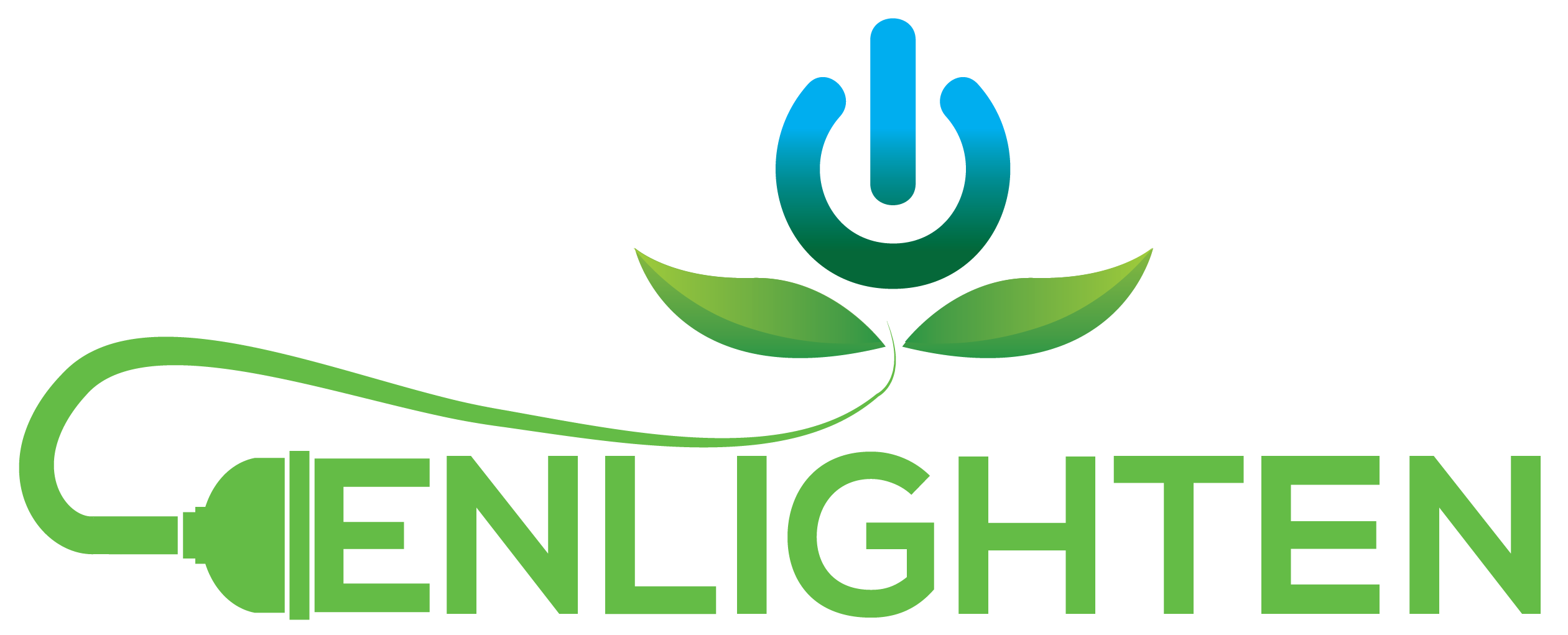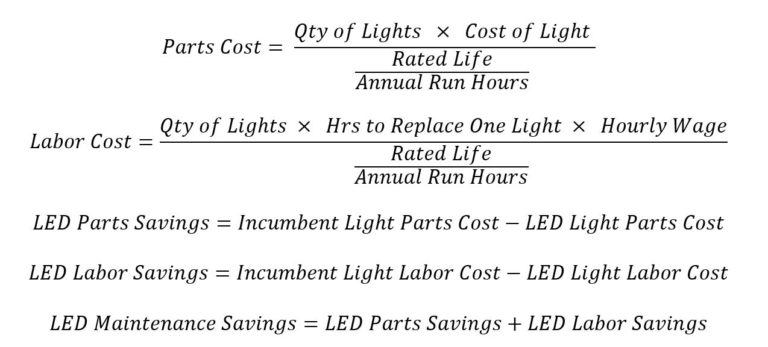Estimating LED Maintenance Savings
In addition to its energy saving benefits, LED’s longer-life aspects are an often-advertised feature. This LED Mini Series installment will review where those long-lasting claims come from as well as a common method for estimating the related value created.
Below is a table that shows older lighting technologies’ rated lives and warrantied periods compared to their LED equivalents. When manufacturers promote LED’s long lives, it is these two characteristics that those advertisements are based on.
The rated-hours metric is commonly used to estimate the life of a light. From this estimation, a lighting system’s parts and labor savings can be made. This method of estimating maintenance savings is best demonstrated with an example. There are two savings parameters that add up to create a total maintenance savings: parts and labors.
Estimating LED Parts Savings: A night-time LED runs for 12 hours per day every day of the year. Therefore, each year it runs for a total of 4,380 hours (12 hours per day multiplied by 365 days per year). If this light were rated for 25,000 hours, it’s estimated life would be 5.7 years (25,000 rated hours divided by 4,380 hours per year). An equivalent fluorescent rated for 8,000 hours would have an estimated life of 1.83 years under a 12-hour-per-day scenario. This means that if a building has 20 LED lights installed, they would need to be replaced approximately every 5.7 years or, annualized, 3.5 lights would be need replacement per year. If each LED lamp cost $15, that translates to an annual maintenance cost of $52.50 ($15 dollars per lamp multiplied by 3.5 LED lamp replacements per year). This is compared to 10.9 fluorescent replacements per year, and, at $6 per lamp, $65.40 spent annually on light parts. Thus, the estimated savings between the two technologies is $12.90 or 20%.
Estimating LED Labor Savings: In addition to the parts savings, LED’s extended life can also save time replacing lights. For the night-time light example, replacing a light may take in-house staff 15 minutes or ¼ of an hour. Under the LED scenario, they would be taking 0.9 hours per year to replace 3.5 lamps. At a fully loaded labor burden of $30 per hour, that would translate to an estimated $26.40 in annual labor expense (0.9 hours multiplied by $30 per hour). This compared to 2.7 hours per year or $81.90 under the fluorescent scenario. Therefore, the annual labor savings would be $55.50 or 68%.
Estimating Total LED Maintenance Savings: Under this method of estimating LED savings, the total maintenance savings is simply the sum of the parts and labor savings or $68.40.
Important considerations for LED lifetimes:
First, it is important to understand how proposed maintenance savings are arrived to and whether the underlying assumptions are realistic. For example, an LED firm’s savings proposal may assume that a business has a labor-burden of $150 per hour. Although this may be a valid assumption under a contracted scenario, this may also be extremely over-estimated for in-house labor situation which would likely be closer to $30 to $50 per hour. Assuming $150 per hour would translate to significantly greater maintenance savings that applicable to a $30-per-hour scenario.
Second, many LED manufacturers and related retailers may advertise an estimated lifespan in years the LED light will last. In the above example of the night-time light, it would not be uncommon to see an advertisement claim a life of 5.7 years for an LED light rated for 25,000 hours running for 12 hours per day, 365 days per year. When investing in an LED lighting system for an entire building, this may give the expectation that every single LED light will last exactly that long. A better expectation to make is that a very, small percentage will fail well before that, a small percentage will fail somewhat before that, a percentage will fail around that time, and a good percentage will last beyond. Fluorescent and other light technologies fail in a similar fashion: some fail before the rated period and some after.
The maintenance saving method provided in this LED Ed Series installment is meant to provide a way to estimate the value of LED versus other technologies, not to provide a precise annual maintenance cost or precise system life time. Lighting system ratings and warrantied periods is a complex topic.



